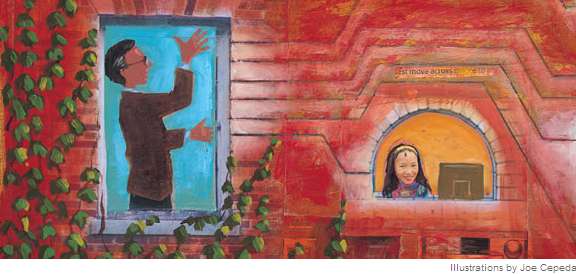Global Classroom at JHSPH

What is a global classroom? Mike Field zooms in on distance education at JHSPH in the Johns Hopkins Public Health magazine (Fall 2009). "Technology and pedagogical savvy are revolutionizing public health education," Field says.
Some key points from the article:
- The availability of the distance education option for students around the world has been increased significantly over recent years by the addition of a wide range of online courses.
- "We saw that our part-time programs could be more widely available through distance education..." —Marie Diener-West
- Tools [supporting the distance education courses] include hours of pre-recorded lectures; direct email contact with faculty; a threaded, content-rich bulletin board discussion system that encompasses polls; private work spaces; document sharing; and DED Messenger.
- "When we began this effort in 1997, there was no existing model, so it was largely a matter of saying, ‘Let’s try something entirely new.’ We ended up creating features that have helped to change teaching and pedagogy across the School." —James Yager
- John McGready [biostatistics assistant scientist] compared outcomes in his online and onsite biostatistics classes; he discerned no significant differences in learning based on evaluations between the two groups.
- "It’s the quality and attention to detail that makes all the difference. We focus on the learning that has to happen." —Sukon Kanchanaraksa
- "One thing that tells me we have succeeded is the surprising number of online students who travel to Baltimore to receive their diplomas in May at graduation—there are many each year." —Dean Michael J. Klag
- Experts say this expansion of access to top-flight public health pedagogy can’t come soon enough: a critical shortage of public health workers—across the country and around the globe—is looming, due to years of declining public health budgets and an oncoming tidal wave of retirements.
- ASPH estimates that it will be necessary to find 250,000 more public health workers by the year 2020 in order to return the U.S. to its former ratio of 220 public health workers per 100,000 of population.